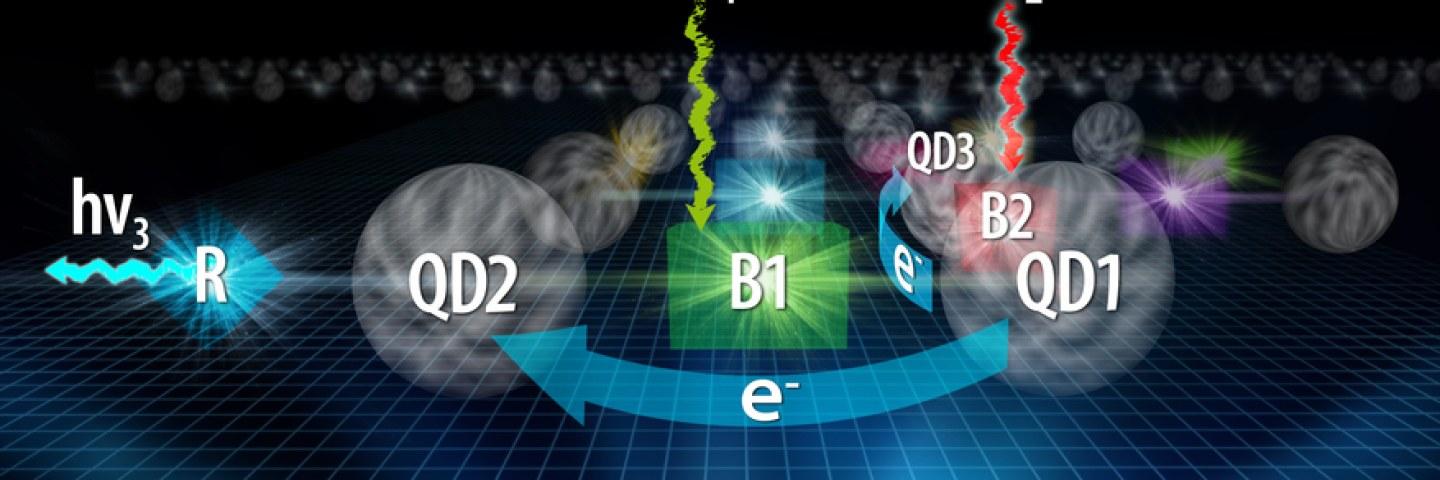
Our team has its research focus on properties and functionality of novel compounds and hybrid nanomaterials designed for the solar energy and nanophotonics applications.
Research focus and goals
The interaction of light with specifically designed molecules, molecular assemblies, and molecule-semiconductor nanohybrids is investigated experimentally using a range of spectroscopic techniques including ultrafast laser methods and theoretically through computer modeling. This knowledge is used to design new photoactive nanomaterials and devices for today and future applications.
Our mission is to use chemical approach to design new compounds and advanced materials with unusual photophysical properties and functionalities. We develop understanding of light-matter interaction in molecular systems, supramolecular architectures, semiconductor quantum dots, nanorods, nanowires, and organic-semiconductor hybrids. Our research allows us to optimize materials for highly demanding applications such as solar energy utilization, and to work on new concepts such as single nanowire sensors and optical computing.
Our team combines expertise in photophysics and photochemistry with particular focus on optical spectroscopy methods with ultrafast time resolution down to femtosecond, and ultra-high sensitivity down to single molecules. The experimental studies are complemented by the expertise in quantum chemical computer modeling of molecules and materials using, in particular, quantum chemical density functional theory (DFT) and its time-dependent (TD-DFT) form, and in addition molecular dynamics (MD).
Impact
The material design rests on the team expertise in molecular self-assembling, nanoparticles and nanowire synthesis and development of organic-semiconductor and organic-metal nanohybrids.


